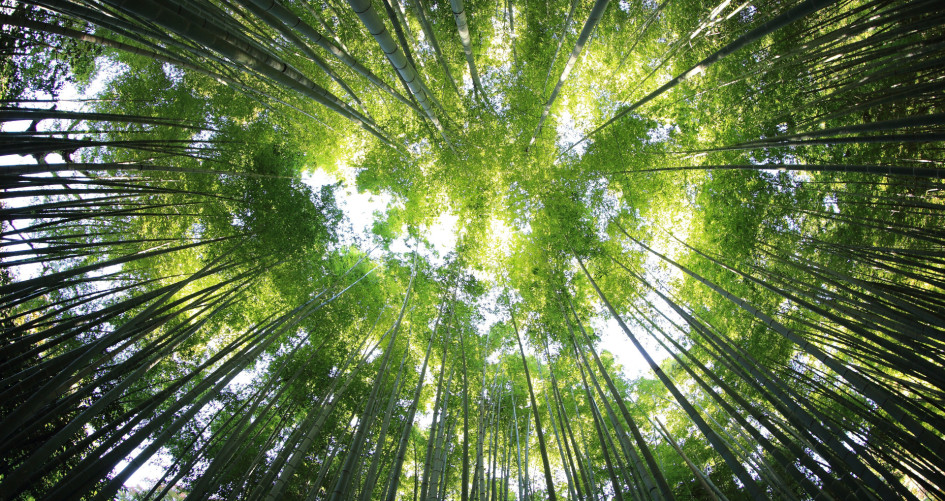With the effects of climate change accelerating around the world, increasing ambition in adapting to these impacts will be high on the agenda at COP26 in Glasgow. Protecting biodiversity – all life on Earth – is a vital part of the battle against climate change.
The Nairobi Programme (NWP) – the UNFCCC’s knowledge-to-action hub on adaptation and resilience – together with its 430+ partners is helping developing countries enhance adaptation action through knowledge. Here are seven biodiversity projects that showcase the ways that people around the world are protecting and restoring ecosystem health to reduce the extent of climate change and build resilience.
Trees and Bees (Nepal)
Since 2014, the Bishnupur community in the Sarlahi district of Nepal has been implementing strategies to improve its resilience to climate change and natural disasters. These strategies aim to increase household income and reduce vulnerability through nature-based solutions that also tackle flooding and riverbank cutting. The community first assessed the sources of climate vulnerability and alternative livelihood options. Then it promoted the expansion of tree cover both inside and outside forests to protect and restore the environment. The community also cultivated beehives to support forest biodiversity, and collected honey to generate income, particularly for women.
Watershed Forest Restoration (Paraguay, Brazil)
The Itaipú hydroelectric power plant is one of the largest renewable energy generators in the world, supplying 90 per cent of Paraguay’s electricity mix and 16 per cent of Brazil’s. Starting in the 1970s, Itaipú Binacional pioneered a series of watershed restoration programs, including forest protection, reforestation, and improved land management practices to create a long-term sustainable solution to secure a reliable flow of water for hydropower production. The programs also delivered a broader range of social and environmental co-benefits to the communities and biodiversity living along the Paraná River. This work was vital, as deforestation was increasing the speed of water run-off into the Paraná River and its tributaries, altering peak flows, which led to soil erosion and run off, drought and water scarcity. This project has seen more than 44 million trees planted in the area around the dam with significant involvement of local indigenous communities.
Coastal Zone Adaptation (Tanzania)
Tanzania’s coastal areas – like those in many countries – face degraded natural ecosystems and coastal erosion. Coral and mangrove habitats are further endangered by the unsustainable use of natural resources. Incremental sea level rises further damages coasts and infrastructure. In the country’s largest city, Dar es Salaam, $5.3 billion in public and private assets are at risk from flooding. Coastal zone adaptation in this project includes the building and upgrading of sea walls, relocating aquifers and restoring mangrove forests to protect coastal communities from floods. A network of 87 local community groups was also established in the project areas to manage the mangrove sites. So far, 6 community rainwater harvesting devices have been built; at least 100 locals have been trained in coastal and climate vulnerability mapping; 1,000 hectares of mangrove habitat have been rehabilitated, while 10 boreholes and 15,000 litre of storage tanks have been installed to support water access.
Large-Scale Ecosystem Adaptation (Gambia)
Mangroves are vital as they act as buffer zones protecting villages from storm surges and floods. This project in the Gambia will restore and rehabilitate 10,400 hectares of degraded forests, savannah and mangroves and 3,000 hectares of farmlands. The project aims to establish ecologically sustainable businesses; develop ‘home-gardens’ to diversify food and income sources; and integrate adaptation actions into sectoral policies.
Nor Yauyos-Cochas Landscape Reserve (Peru)
Since 2013, four mountain Ecosystem-based Adaptation (EbA) measures have been designed and are being implemented in the Nor Yauyos-Cochas Landscape Reserve, east of the capital Lima. These adaptation solutions combine traditional local knowledge with the latest science. The adaptation efforts have three components: strengthening community organisations and institutions; strengthening local capacities and knowledge and combining green and grey infrastructure to restore water flow to native grasslands and improve livestock and pastureland management – a key form of adaptation to climate change in the Andes. Working with conservationists, engineers and anthropologists, community members identified and designed the EbA measures according to their own needs, adapting ancestral and modern technologies to current social and environmental contexts and expected future climate. The projects showcase the importance of recovering traditional knowledge to ensure community ownership of projects.
Enhancing Climate Change Resilience (Cambodia)
This project uses participatory approaches and communication to help protect and restore forest ecosystems in Cambodia. The project aims to reforest land to regulate soil waterflow. It has created patrols to halt illegal logging. The project has also established ‘home-gardens’ with irrigation to diversify sources of food and income. The project has supplied pumping wells and rain harvesting tankers to boost the availability of water. The project has developed early warning climate systems to inform farmers’ planting decisions. The project includes listening and responding to local villagers regarding project design. This approach has reduced suspicion among community members that resources for large, donor-funded projects are not used for the intended beneficiaries. The project management unit met this challenge by spending more time with community members, coaching villagers on new techniques and proving that these new techniques are effective. Through TV broadcasts, posters, radio, camping events, school visits and events at road rest areas, there has been active awareness-raising of climate change resilience practices.
The UNFCCC knowledge-to-action hub on climate change adaptation and resilience, the Nairobi Work Programme (NWP), works with 430+ partners to close knowledge gaps and help countries scale up adaptation action. Since 2019, an expert group of NWP has been working on Biodiversity and Ecosystems (with a focus on forest and grassland ecosystems).
The NWP has compiled a series of biodiversity projects around the world, which both showcase best practice and can be scaled to other parts of the world.
NWP encourages experts and organisations knowledgeable about biodiversity projects that enhance climate resilience to share their best practices and case studies on the Adaptation Knowledge Portal.
